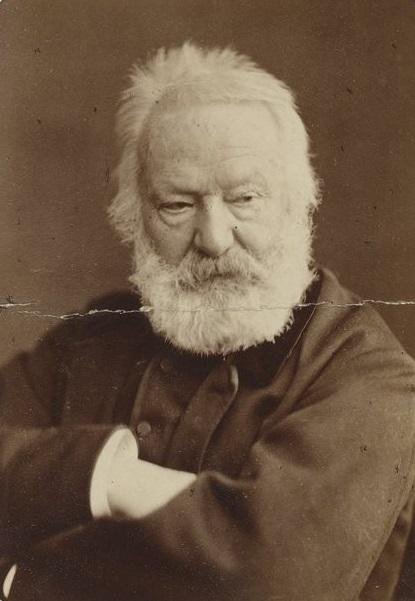Hugo is one of the most famous and important French writers, a reflection on both the literary and the political life of the country. His father comes from Lorraine, his mother was born in Brittany, and he was born in Besancon, where the Hugo family lived for several months. The father is an officer in the Napoleon army, doomed to go from Corsica to Naples to Spain, where he remains a garrison for a relatively longer period of time. Mother Sophie is called upon to follow her husband in his constant relocation, accompanied by his three sons. Early childhood of Victor is filled with constant trips, during which his emotional world is filled with unique experiences and scenic views. The child clings to his caring mother, and to his father Leopold keeps cool respect, impressed mostly by his parade uniform and by his dedicated military dedication to the service of the great Napoleon. When his parents divide, he must, as sensitive to the social commitments of his teenage parents, choose between the loyalty of his father to the Empire of Napoleon I and the zealous attachment of the mother to the royalist ideas. He hugely embraced the tender parental patronage of her highly intelligent mother, and later admits that his mother, his family preacher, and the garden behind their Paris home, where he spent the last days of his childhood, contributed to his formation as a poet.
As a pupil, he translated the poems of his beloved Roman poet Vergilius from Latin to French, composed classical tragedies and participated with his teenage poems in the competitions for young writers announced by various French academies. By the end of the 1920s he had created the reputation of the "miracle child" in the new French poetry. On July 10, 1816, when he was just 14 years old, he wrote an important revelation in his adolescent diary: "I want to be Shatobrian or nothing." The newspaper of the Kumira / Shatobrian / of the three brothers Hugo, Abel, Eugene and Viktor is called "Conservative" and they decide to publish their Literature Conservative magazine, which runs from September 1819 to March 1821. The magazine comes out thanks to the exceptional productivity of the youngest brother, Victor, who, using eleven pseudonym, wrote 120 articles and 22 poems during the period of his publication. Young Romantics in France unite in the early 1930s around the charismatic figure of Charles Nodie, the author of the Gothic novels released in fashion, which founded in 1824 the first senacle of Romanticism in Paris. The enthusiastic romantics unite around their good-natured patron Noydie, who regularly gathers them on friendly readings in the Arsenal Library, housed in the palace of the French Artillery Commander, and around the French Muse, created by the poet Emil Descan in the same 1824.
Under the influence of Nodie, young Yugo creates his first novels with a deliberately complicated intrigue, an eerie atmosphere and unusually strong characters - "Han from Iceland" and "Bjorg Jargal". To express his ardent love to the heart of his heart, Adele Fushe, he creates the frenetic novel "Khan of Iceland," in which he portrays himself as Ordener, and his beloved portrays the name of Etel. In a letter to his fiancé he shares: "My soul was full of love, sorrow, and youth; I did not dare to entrust my secrets to any living creature; I chose a dumb confidant, the paper .. " At the same time, two related events in his intimate and family circle marked his youth. The adorable adolescent love of Victor responds to the fascinating Adel Fouche, the daughter of a close friendly family of the Hugo family, whom he married in 1822. Shortly before, his brother, Eugene, suffered an endless mental depression (perhaps because of the choice of Adele, in which he was secretly in love), and the family was forced to take him to a mental hospital where he would stay for the rest of his life. In 1822, Hugo's first literary collection was published, titled "O'd". The recognition of his undisputed poetic talent comes shortly after the publication of the collection. The young poet received the prestigious Order of the Legion of Honor in France. During the period 1823-1828 he worked as a poet mostly in the two lyrical genres - the ballad and the ballad. His second collection, Odys and Ballads, appeared in 1828. The following year, a collection of 41 lyrical works by Hugo, titled "Eastern Motifs," in which the poet responds to the romantic enthusiasm of romantics to the wisdom and picturesque mythology of the East.In the following collections "Autumn Leaves" / 1831 / and "The Beams and Shadows" (1840) the authentic lyrical handwriting of Hugo's romance is established, the favorite themes and motifs stand out, his intimate Olympian intimate appears.

They comment that the iconic Batman enemy, the Joker, is inspired by a character in his work The Man Who Laughs.
Well... maybe there is some truth in that
thank you for sharing this story I did not know hugo.
Well... he is really a very famous writer :)
Great post @godflesh
Thank you :)
thank you
i love this post
you are welcome
You got a 11.31% upvote from @postpromoter courtesy of @godflesh!
Want to promote your posts too? Check out the Steem Bot Tracker websitevote for @yabapmatt for witness! for more info. If you would like to support the development of @postpromoter and the bot tracker please